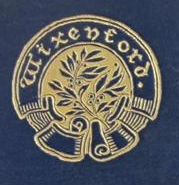Wixenford School
 |
|
| Established | 1869 |
|---|---|
| Closed | 1934 |
| Type | Independent preparatory school |
| Founder | Richard Cowley Powles |
| Location |
Wokingham England |
| Gender | Boys |
| Ages | 7–13 or 14 |
Coordinates: 51°24′00″N 0°49′34″W / 51.400°N 0.826°W
Wixenford School, also known as Wixenford Preparatory School and Wixenford-Eversley, was an independent preparatory school for boys near Wokingham, founded in 1869. A for Eton, after it closed in 1934 its former buildings were taken over by the present-day Ludgrove School.
The school was founded in 1869 at Wixenford House, Eversley, Hampshire, by its first head master, Richard Cowley Powles (1819–1901), a Church of England clergyman, and has been described as "successful and fashionable". Among the school's first intake of boys, in May 1869, was George Nathaniel Curzon, a future Viceroy of India.
Before being attached to the school, "Wixenford" was the name of its first home, a new house built for Powles at Eversley in 1868–69. Powles, who in his youth had been a fellow of Exeter College, Oxford, had previously operated a school at Blackheath, and he came to Eversley to be near his lifelong friend Charles Kingsley. After Kingsley's death in 1875, Powles became less active in the school and retired as headmaster in 1879. He moved to Chichester in 1881, where he became a prebendary of the cathedral. One of his boys at Wixenford, Albert Baillie, writing in the 1950s, recalled Powles as "a genuine educator and a remarkable man" and noted that he had worn his hair "neatly brushed up into two horns above his ears".
...
Wikipedia
